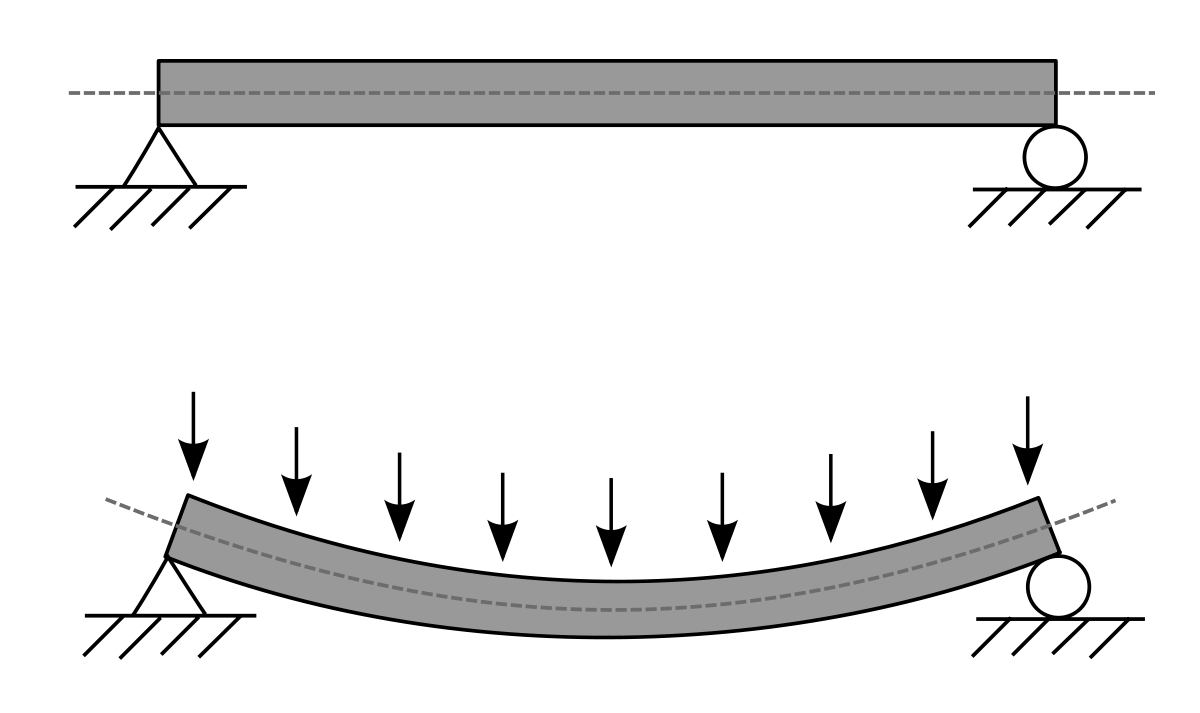ME202 - Strength of Materials

Instructor
Dnyanesh Pawaskar
Section
(S2) Selecting the section was allowed during registration, but students who registered late were asked to change sections later due to the limited number of seats
Semester
Spring
Course Difficulty
Syllabus wise the course is of medium difficulty. It includes concepts that are built upon basics. The main challenge is to solve the problems. Even the simplest problems need to have an approach strategy that once figured out then moves on to rigorous solving. The theory is explained pretty well in depth by the instructor with detailed notes and plenty of example problems. In-class tutorials with questions based on real-time applications
Time Commitment Required
Understanding the theory is simple as mentioned before, although time requires to be spared for problem-solving. Solving tutorial questions is sufficient to get started but it is good to try questions from the recommended books.
Grading
Relative grading, quite fair grading
Attendance Policy
No attendance policy
Pre-requisites
ME201 - Solid Mechanics
Evaluation Scheme and Weightages
40% quiz, 25% midsem, 35% endsem
Topics Covered in the Course
- Introduction and mathematical preliminaries. Index notation.
- Displacements in beams using different methods. Energy methods: minimum potential energy, reciprocal theorem, uniqueness.
- Plane problems: 2d polar coordinates, axisymmetric problems, curved beams, thermal expansion.
- Elastic stability: energy approach to beam buckling, beam-columns with transverse loads, secant formula.
- Torsion of non-circular prisms, thin closed and open-walled sections, non-prismatic circular shaft, multiply connected sections.
Quality of Lectures
Notes were written on the blackboard entirely, tutorial problems were solved in class first and solutions posted later. No electronics presentation shared. Plenty of books suggested for reference.
Assignments and projects in the Course
None
Exams
Questions are variations of tutorial problems, so spending time-solving questions will help in judging how to solve a given problem. But questions are extensively lengthy hence speed is of essence and due to the length of the solutions so is accuracy. No marks for intermediate solutions, generally binary marking. All questions are of usually of medium difficulty with one difficult question. Usually trying to solve the paper partially (yet fully correct) has proven to yield more marks than scrambling to solve the whole paper.
Reference Material
- Elasticity Theory Applications, and Numerics, M. H. Sadd
- Some chapters require different reference sources
Importance of Course
Counts among the basic courses along with solid mechanics. The questions tackled also give a taste of approximate engineering methods used to solve real-life problems. Though one of the core courses, it’s also one of the more challenging ones, but also fun.